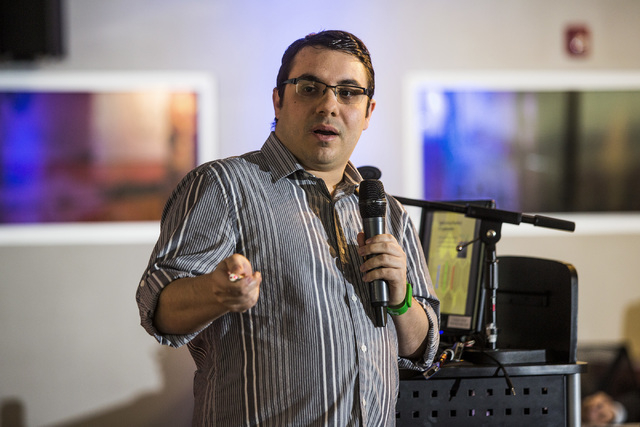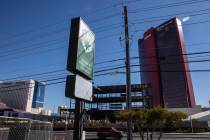Pot power a pricey concern for Vegas’ medical marijuana industry
Early last year, the broker for a 100,000-square-foot warehouse near Las Vegas called the power company to find out how much juice the building would need.
Longtime NV Energy executive Arnold Lopez went out to meet a group on the site and asked what kind of business they planned.
After some hesitation, they told him: medical marijuana cultivation.
Lopez asked questions and started doing some quick math. And, as he recalled, “All of a sudden I came up with numbers I’d never seen before.”
That single marijuana-growing operation, he estimated, could require 5 megawatts of capacity — enough to power 1,000 homes. That’s about 5 percent of the capacity of an entire substation.
As Nevada’s medical marijuana industry gets off the ground, it’s confronting a problem that has gotten little public attention: Growing the plants indoors takes massive amounts of power and water.
People in the industry talked about those challenges and possible solutions Tuesday morning at a forum sponsored by the U.S. Green Building Council’s Nevada chapter.
Lopez told a crowd of several dozen that marijuana cultivation facilities might use more power per square foot than anything else ever built in Southern Nevada. That will require substation upgrades and could strain the power distribution system, depending on when and where growers open.
“This industry really needs a lot of help as far as sustainability,” said moderator John Laub, president of the Las Vegas Medical Marijuana Association.
People in the industry are starting to talk about ways to control energy use, Laub said, but have been more focused on getting the doors open.
Consultant John Perry talked about the effectiveness and energy usage of various kinds of lighting, including high-pressure sodium, metal halide and LED.
“Sunlight is the best,” he said in response to a question. “No artificial light is going to compare to sunlight.”
Nevada has plenty of sunshine. But growers can’t use greenhouses for marijuana — for security reasons. State regulations bar plants being visible from outside a cultivation facility.
Lori Glauser, a sustainability consultant to marijuana growers, explained what she sees as the absurd results of that rule: As the hot Nevada sun beats down in the summer, growers will have to block out that natural light and feed marijuana plants with artificial lights, which consume energy.
Then, because all those lights put off heat, they’ll have to use even more energy cooling the buildings.
Cultivation facilities are “kind of like little factories,” said Rick Van Diepen, chapter president of the Green Building Council.
A 10,000-square-foot grow house with 400 plants could use 1.5 million to 2.5 million kilowatt hours of energy and 144,000 gallons of water a year, Perry said.
So companies are rushing to supply the new industry with products they say will make cultivation more energy-efficient.
Many growers are interested in solar energy, though they’re waiting to see exactly when the marijuana industry will be ready to start, said Louise Helton, a co-owner of Las Vegas-based 1 Sun Solar Electric.
Because of delays in state regulations, including those governing pesticide use, dispensaries and growers have not yet opened. It’s unclear when they will, though the state has said it should be soon.
At Tuesday’s event, officials with Nano Evaporative Technologies showed off an $8,000 cooling and air purification unit, which they said recycles water and vents heat to the outside, greatly reducing power and water usage. Company CEO Alyson Sheradin said she’s already working with one grower.
Using special skylights could cut energy usage 20 percent to 30 percent, Perry said. But even after every possible efficiency measure, growing hundreds of marijuana plants indoors will still require a lot of power.
“Even if your entire roof was covered with solar panels, it still wouldn’t be sufficient,” Perry said.
Contact Eric Hartley at ehartley@reviewjournal.com or 702-550-9229. Find him on Twitter: @ethartley

Who wants in the game? See our map showing the sites that could be selling medical marijuana.
Also, see our map showing the sites that could be selling medical marijuana.




























